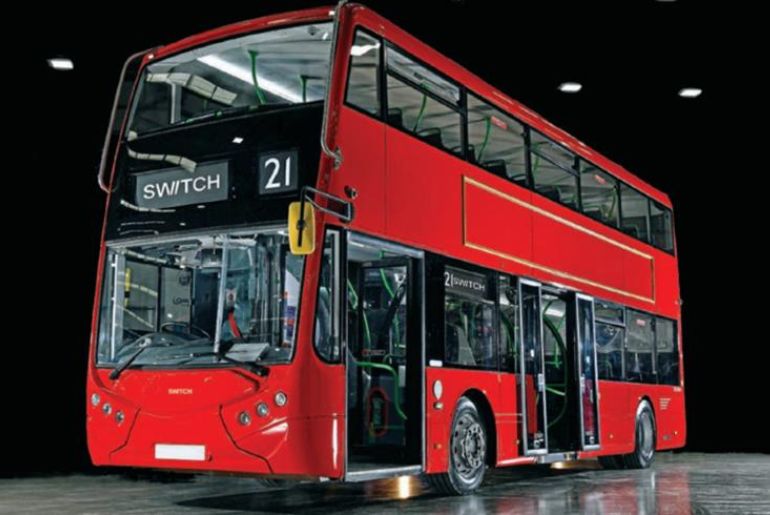India’s market for electric buses, a vital component of government goals to reduce emissions, has been faltering. A significant obstacle is not having a well-defined operating model. In response, Switch Mobility, Ashok Leyland’s electric division, is putting out a plan that draws inspiration from the bus system in London. The strategy is based on the roles that each component plays, divide the ecosystem of electric buses into discrete components.
The management of operations, finance, asset ownership, and technology will fall to different parties. Mahesh Babu, CEO of Switch Mobility, contends that this speeds up the adoption of electric buses by enabling each organization to concentrate on its core competencies. Bus manufacturers like Switch Mobility are just in charge of providing the vehicle under this model; they are not in charge of the operations.
Citing an example of the tendering process in London, Mahesh Babu notes that for a given tender on a particular route, the bid range will be clearly defined. As the money is largely given by the government, the capex remains covered. “There is only the operational risk,” he remarked, emphasising that the money can then be collected on a monthly basis from the operators.
So, should the London model be emulated in India as it is? Mahesh Babu remains pragmatic. He points out that in a developing country like India, most of the states may not be able to fund the vehicle purchases. “We have to come to a scalable model. I am not saying everything will go this way (London model) or everything will go into the GCC,” he said, referring to the gross cost contract model, under which ticketing is done by the government authority. He added that the government seemed to be open to all models.
As per a research report by Axis Securities, Ashok Leyland, which has infused around Rs 1,500 crore in its subsidiaries, Switch Mobility and OHM Global Mobility, has orders to supply 950 and 350 e-buses to Delhi and Bengaluru transport authorities respectively. Furthermore, Switch India has turned EDITDA positive.
As Ashok Leyland fights for a better payment system for selling electric buses (e-buses) to government agencies, it has found an ally in competitor Tata Motors. Tata Motors’ Group CFO, PB Balaji, also believes manufacturers (OEMs) should focus on building efficient e-buses, not holding onto them.
One of the key considerations is this. Supposing each e-bus costs around Rs 1 crore, supplying 50,000 buses would require a Rs 50,000 crore investment. “We simply can’t afford that,” Balaji said, pointing out that no manufacturer has the financial resources for such a huge undertaking. Such a financial burden would hurt the companies’ overall health. “The entire return metric goes out of the window and that would see pressure on the stock prices. So we have to be careful about that,” he remarked.
A burgeoning market Mahesh Babu, meanwhile, is excited about the growth of electric buses in India. Recent estimates from rating agency CRISIL suggest the share of e-buses is set to jump from 4% to 8% in just one year. This surge is being fuelled by two main forces: government efforts and improving economics.
“Growth in e-buses is also supported by favourable ownership economics,” points out Sushant Sarode, Director, CRISIL Ratings. “TCO for an e-bus is estimated to be 15-20% lower than that for ICE and CNG buses over an estimated lifespan of 15 years, with breakeven in six to seven years. Though the initial acquisition cost of an e-bus is twice that of an ICE or CNG bus, it is expected to go down due to improving operational efficiency of original equipment manufacturers (OEMs) with increasing volumes and localisation, and falling battery costs.”
The agency also points out that the recently announced PM-eBus Sewa Scheme should help in addressing issues related to payment security mechanism (PSM), including the setting up of a payment security fund that will facilitate timely payments to the operators in case of delays by STUs and creating battery charging Infrastructure. Iteration is key
Overall, while the new tender conditions are an improvement, it’s a learning process for both the government and the bus manufacturers. As per industry insiders, the two are working together to achieve their goals, with the government tweaking the rules for bidding to make them financially more sustainable.
Ashok Leyland, which is a major bus manufacturer in the segment, remains cautiously optimistic and doesn’t just want to jump in aggressively, even with these changes. According to the company executive, payment security is just one concern. Another worry is the challenge of running electric bus operations across multiple cities. For example, an upcoming tender requires deploying e-buses in cities like Nashik, Aurangabad, and others.
This would be a complex operation with both advantages and disadvantages. The company believes a better solution would be to approach dedicated electric bus operators, as it would be difficult for an OEM to get into that kind of operational scale in such diverse geographies. The government seems receptive to this idea. Mahesh Babu points out that this is a learning curve, and not an instant fix.
He compares the situation to the early days in the solar sector. The bids for these electric vehicle tenders would be very aggressive at first, given there’s always a scramble to get in on something new. But just like with solar, he points out, reality sets in. Ultimately, he says, the price per kilometre for electric vehicles is likely to settle down lower than even diesel.


